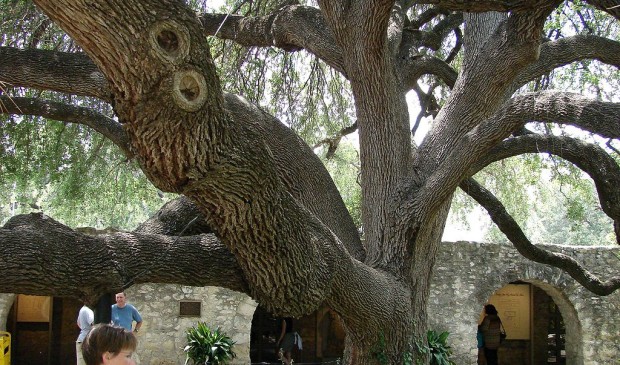City’s 2014 heritage tree results a mixed bag
Wednesday, May 13, 2015 by
Tyler Whitson Austin’s heritage tree ordinance is effectively protecting the city’s healthy historical trees, though last year saw the loss of a considerable number of them due to poor health and related issues.
That sums up what Keith Mars, environmental coordinator for the Development Services Department, said May 6 when he presented his 2014 City Arborist Heritage Tree Report to the Environmental Board.
“We’re doing an effective job,” asserted Mars, noting that the city maintained a roughly 95 percent preservation rate for healthy heritage trees, allowing for the removal of 35 of the 1,083 that staff reviewed last year, or about 1,000 out of roughly 18,000 inches.
Though Mars acknowledged that staff provided some of the tree removal authorizations “truly for development purposes,” he pointed out that many were the result of conflicts between the trees and nearby structural foundations.
On the other hand, staff authorized the removal of 350 heritage trees because they were dead, diseased or posed imminent hazards to their surroundings.
“That’s a considerable number of trees,” Mars explained. “It’s consistent with what we’ve seen over the past couple of years and, unfortunately, is probably what we’re going to see into the future.”
The greatest number of losses occurred in the city’s urban core, where staff authorized 94 trees for removal.
Mars went on to note that weather conditions played a major role in tree loss. “It’s still a reminder that we’re not out of drought conditions and we’re still seeing the residual consequences of 2010 and 2011,” he said.
As KUT reported, 2011 was a record-breaking year for high temperatures in Austin.
In order to qualify for the heritage designation, a tree must be at least 24 inches in diameter when measured 4 1/2 feet above its base and must belong to one of several species listed in the city’s Land Development Code.
City Council passed an ordinance defining and protecting heritage trees in 2010.
According to Mars, staff has the ability to make administrative decisions about heritage trees if no single stem exceeds a diameter of 30 inches. Though decisions for those larger trees require the review of the Environmental Board and the Planning Commission, there were no such cases last year.
More than three-quarters of the heritage trees surveyed last year were either live oaks, pecans or American elms.
Photo of Texas live oak by Rei at en.wikipedia [GFDL, CC-BY-SA-3.0 or CC BY-SA 2.5-2.0-1.0], from Wikimedia Commons.
You're a community leader
And we’re honored you look to us for serious, in-depth news. You know a strong community needs local and dedicated watchdog reporting. We’re here for you and that won’t change. Now will you take the powerful next step and support our nonprofit news organization?








